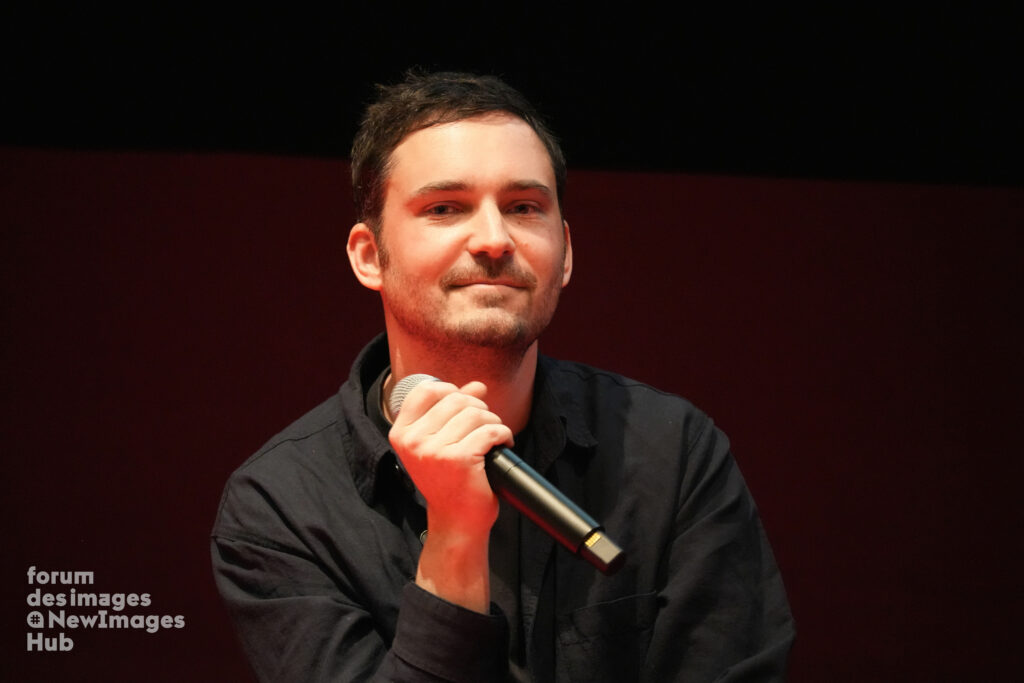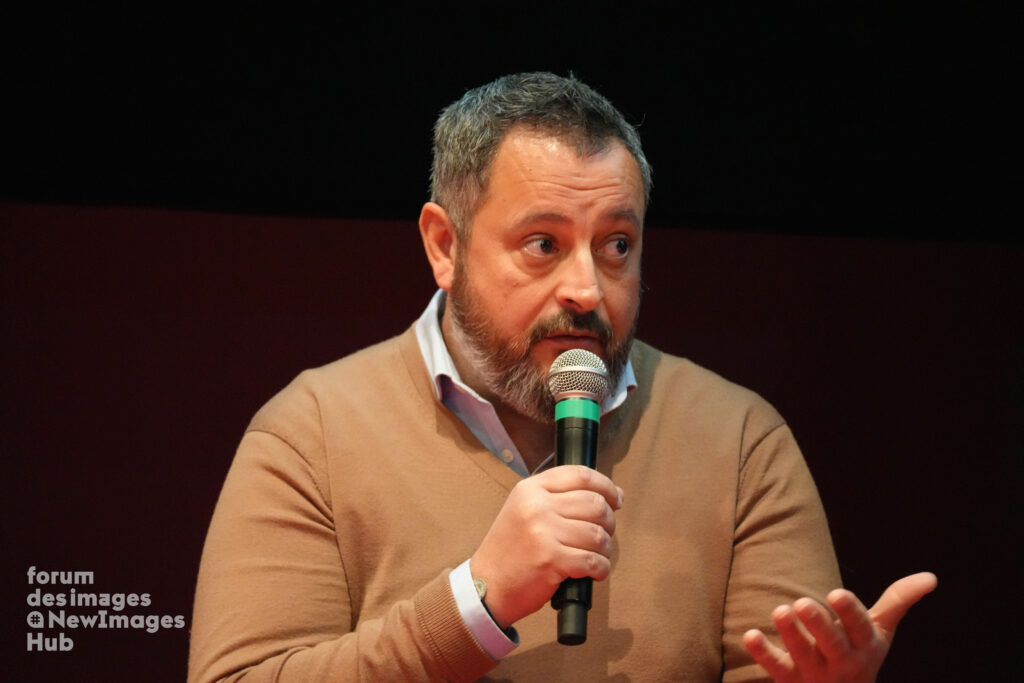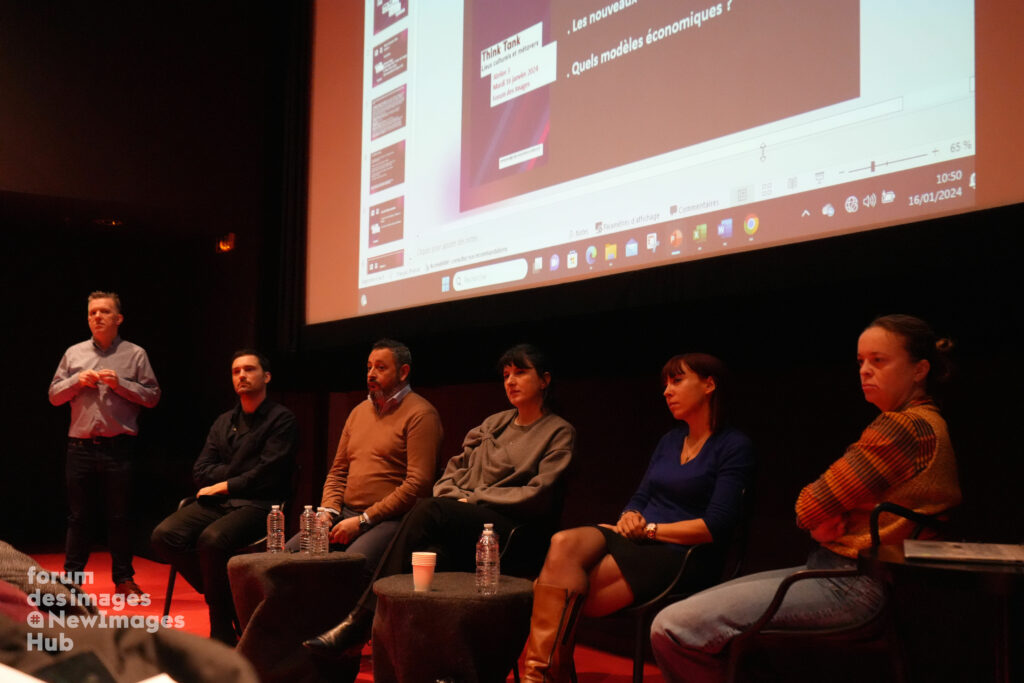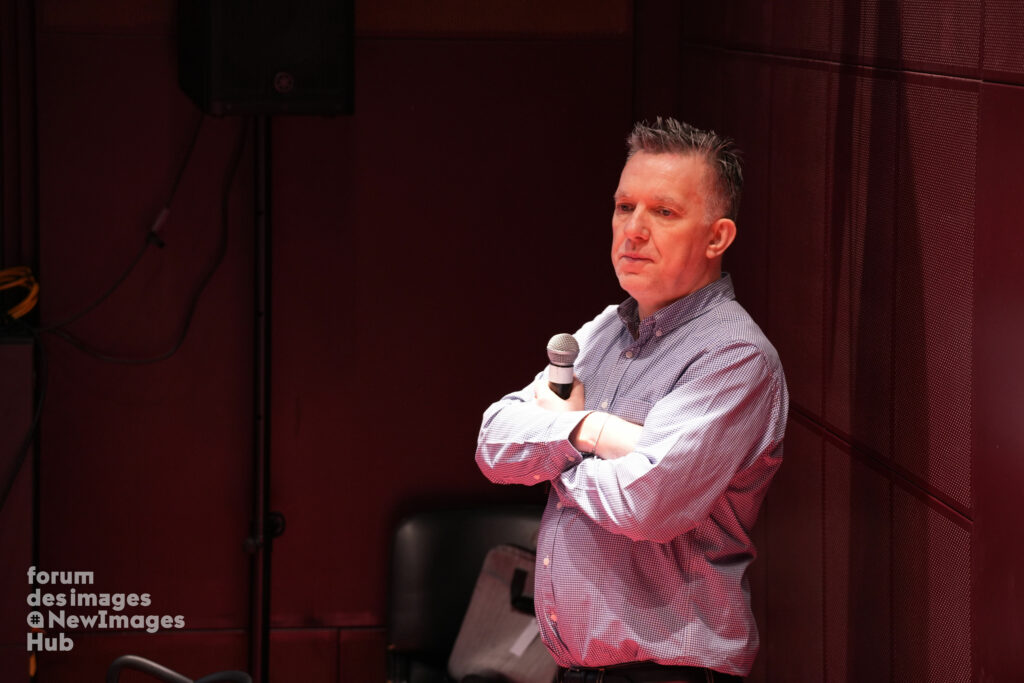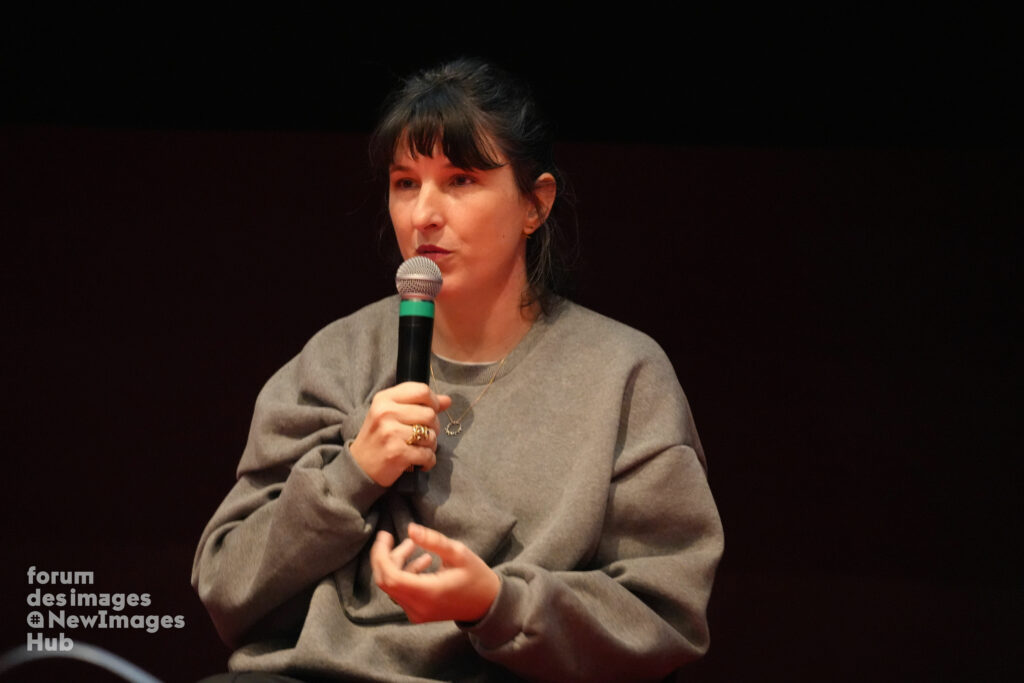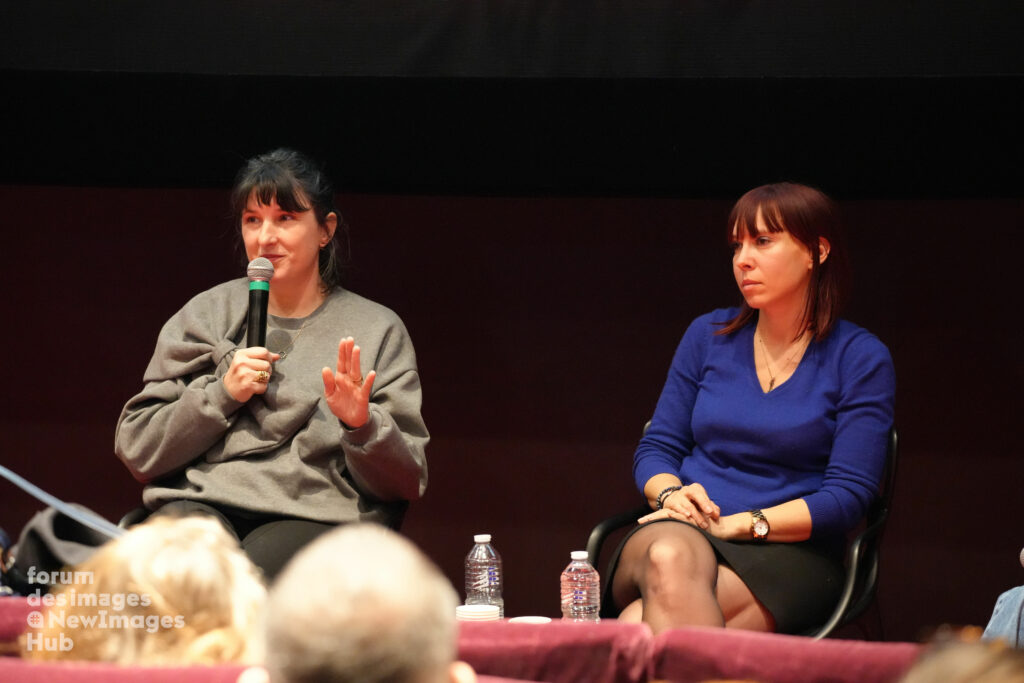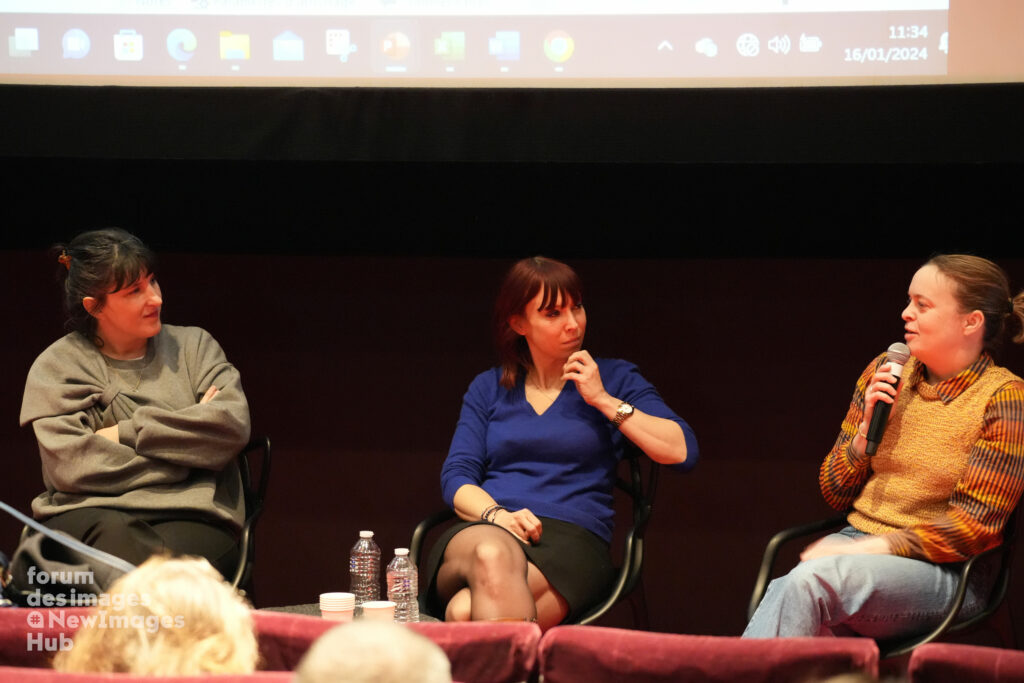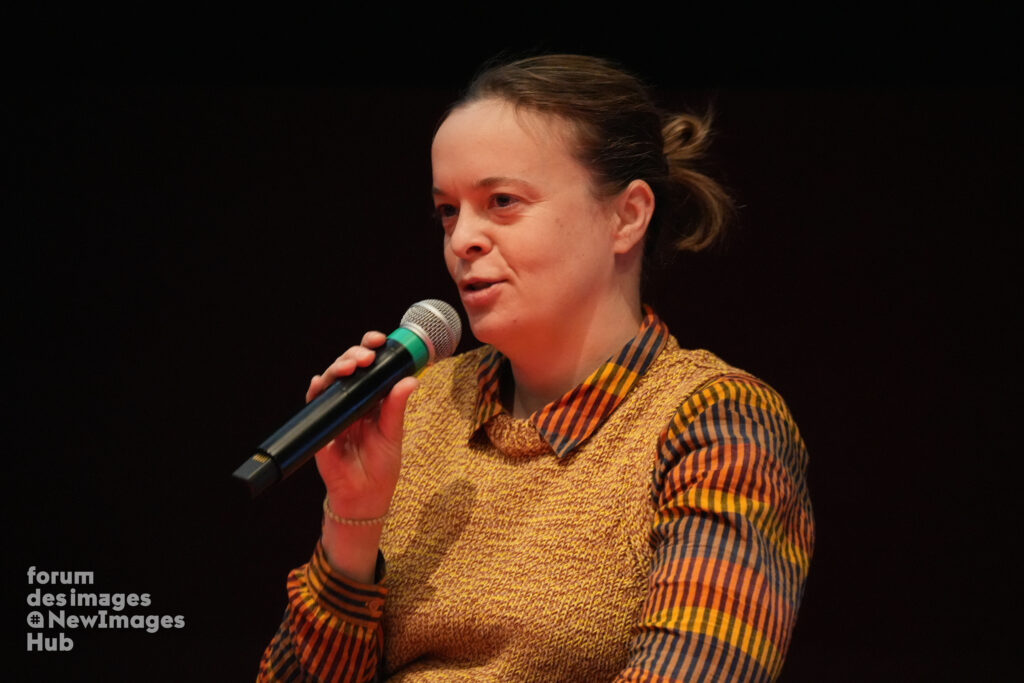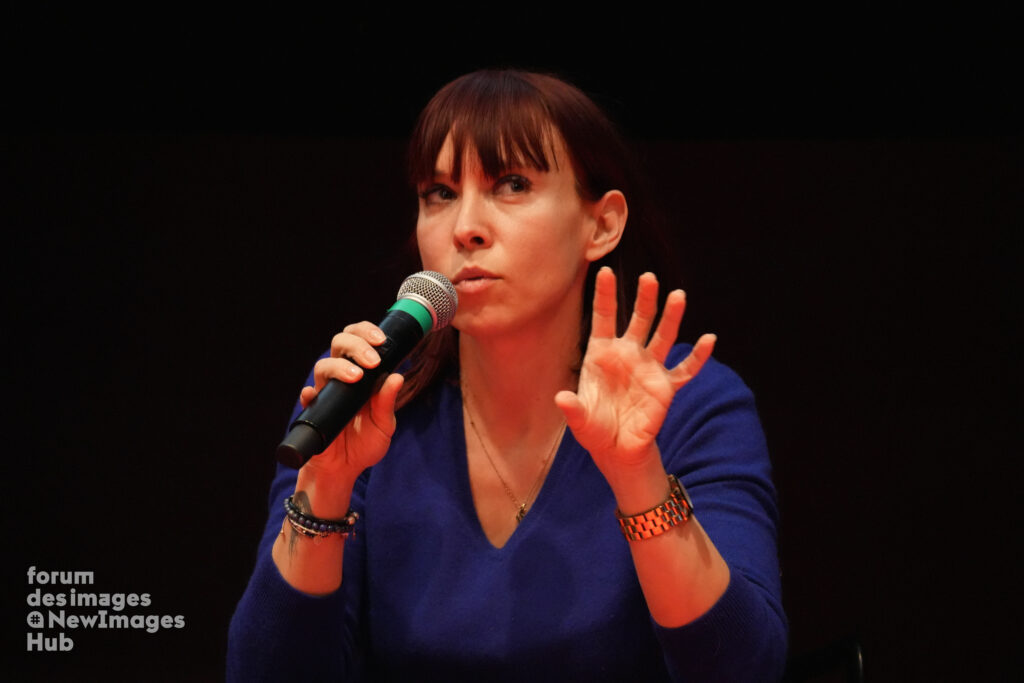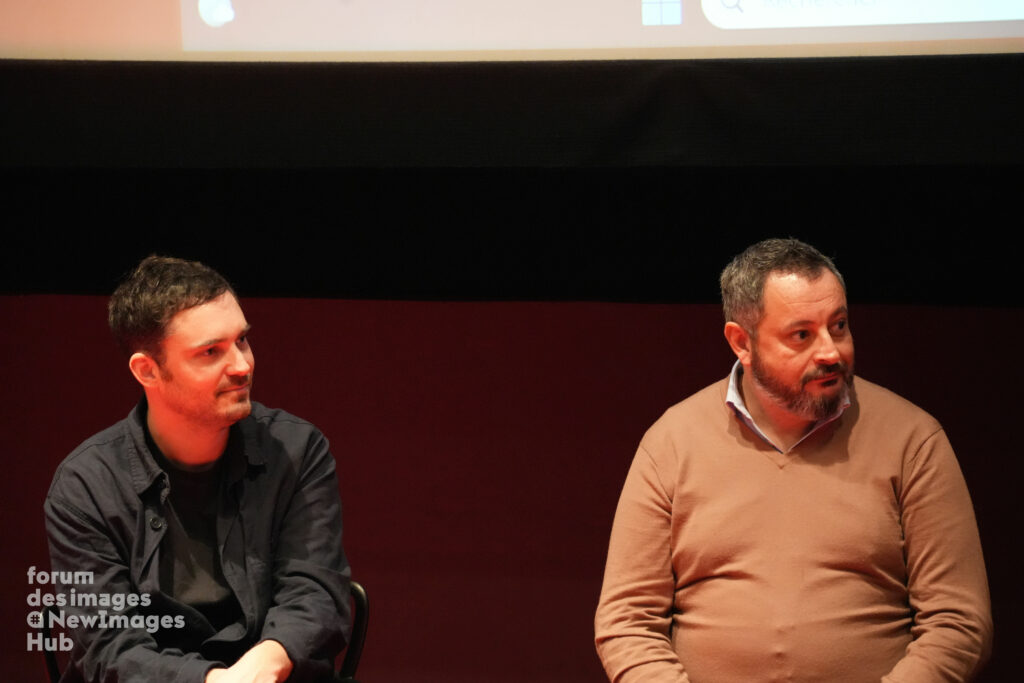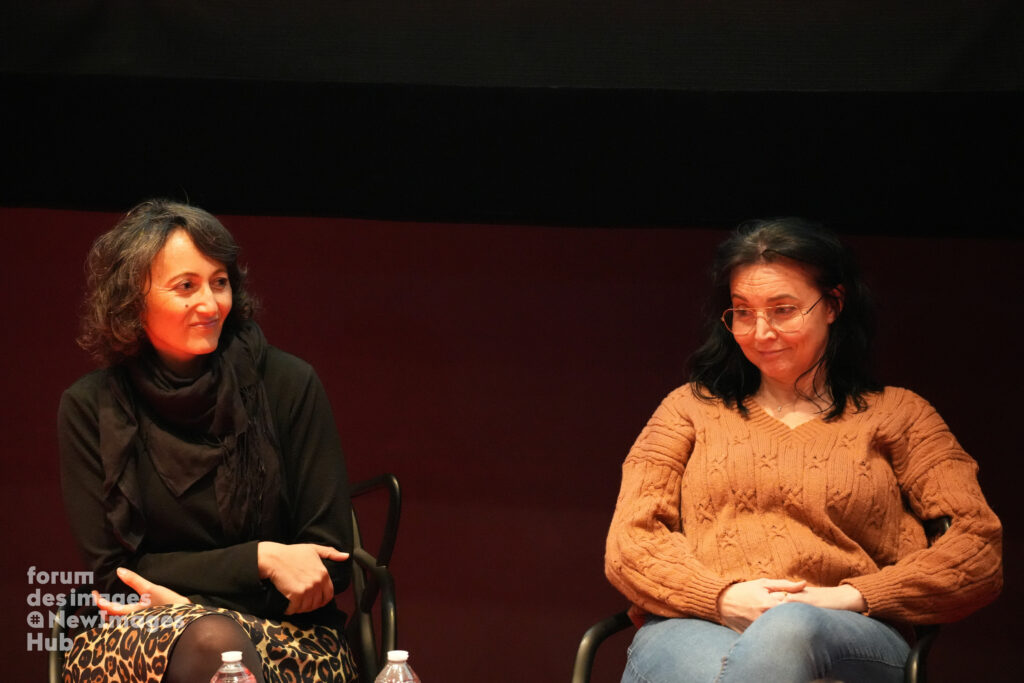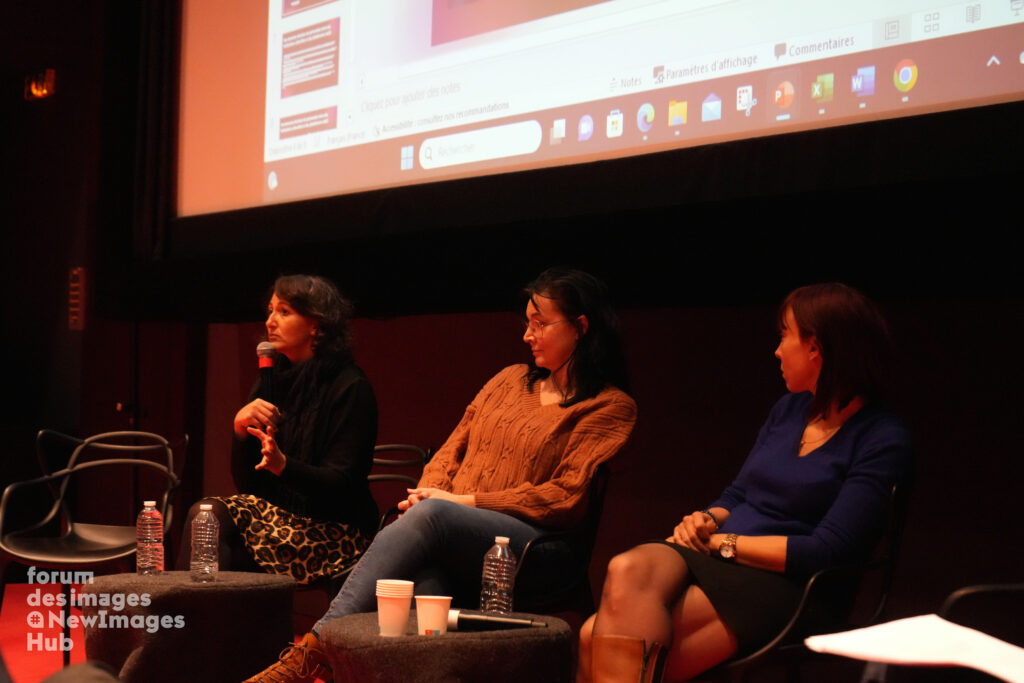Third edition of the «lieux culturels et métavers» think tank
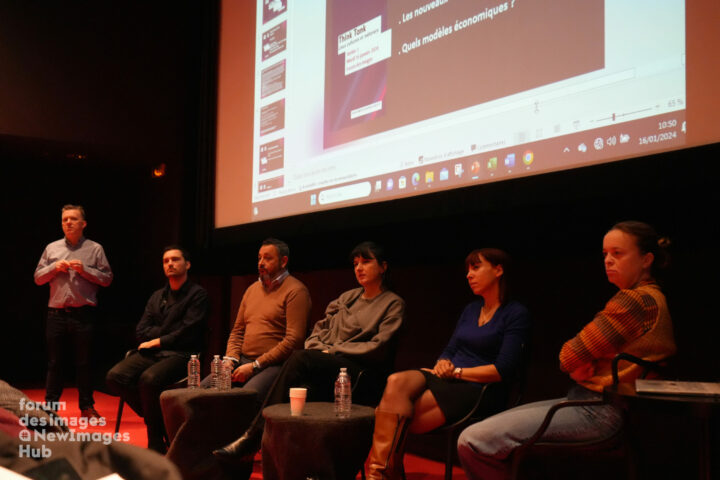
A NewImages Hub and CLIC project
On January 16, 2024, the Forum des images hosted the third session of the Think Tank «Métavers des musées», co-hosted with CLIC, this time questioning the different types of existing uses for metavers, with the viewpoints of several institutions that have taken part in the creation of (pre)metavers projects or immersive virtual worlds. If you missed the second Think Tank session, don’t hesitate to read the report here!
For the record: The «lieux culturels et métavers» think tank is a series of 4 working groups inviting museums, cultural venues and historical monuments to work together to imagine the future of cultural institutions in the metaverse.
« The idea behind the think tank, co-piloted by the Forum des images and the CLIC, is to create a crossroads between cultural institutions and French tech companies» – Michele Ziegler
Which uses for which audiences? What are the obstacles to adopting these technologies? How accessible are they? How can we engage audiences?
With over 70 institutions and companies having already agreed to take part in the Think Tank, its aim remains to prepare French cultural institutions and venues for the call for projects just published by the Ministry of Culture, France 2030.
During this 3rd session on January 16, representatives of institutional projects related to metavers presented their intentions and points of view:
- Gwendal Creurer, Director of the Virtual Hub at SAT (La Société des arts technologiques) Québec presented the «Satellite» platform and the project underway at the Pointe-à-Callière museum in Montreal, aimed at creating collective immersive experiences.
«Satellite is an immersive and social 3D environment, accessible on the web, that proposes a new way of creating and disseminating virtual experiences.»
Satellite is an immersive web-based platform dedicated to the cultural world, enabling virtual works or exhibitions to be hosted, particularly as part of creative residencies. Proposed as a continuation of the SAT space, it is accessible online, on a phone, tablet, computer or virtual reality headset, and from the web browser with the active Mozilla Hubs community, dedicated to artists and cultural organizations.
Experiences are developed using free and open source creation tools, such as 3D software Blender, the SAT GitHub, or a toolbox that enables customization of experiences: interactivity with a trivia group, fulldome visualization, creation of hybrid experiences… Immersion is also guaranteed by the social nature of the platform, with the use of webcams, avatars and spatialized audio for users.
But then, what kind of formats on Satellite? The experiences presented are a mix “at the limits of mixed reality, holography, interactivity and hybrid theatrical performance, exploring themes such as the relationship of our bodies to space, our modes of collaboration, the memory of places and the representation of spaces.” – SAT website
SAT also proposes to accompany the conception of these works by setting up edutainment experiences, cultural mediation, hybrid experiments and more.
The current project with the Pointe-à-Callière museum aims to adapt the platform to the museum, injecting specific functionalities according to the institution’s needs, and bringing out a prototype museum experience structure, with accompanying challenges:
- Cultural mediation for school groups with Quebec multidisciplinary artist Michel Lemieux
- Hybridization of virtual and physical environments, and the mediation challenges involved.
Developed in the immediate aftermath of the pandemic, the platform combines cultural mediation and technology to put the public back at the heart of museum activities.
- Adèle Faustinien, in charge of cultural development for the City of Nice, shared the progress of the Muséum d’Histoire Naturelle project with Olivia Papini, creator and storyteller.
In a climate of business landing, where institutions want to build partnerships and generate opportunities, it’s possible to draw inspiration from the creative industry and video games to arouse the interest of institutions and companies. The City of Nice’s Natural History Museum presents a scientific mediation challenge, with its more than one million objects and 180m2 of public space, that of “transmitting the living“.
How do you work with scientists who want to pass on their knowledge? How to duplicate experiments? How do we think about format? “It’s not just a question of creating experiments, but also of creating stories“. – Olivia Papini
The Waterscreen project, scheduled for 2025 at the Oceans Forum, will enable mediators to create their own stories, and set up personalized experiences for educational, tourist and cultural venues. By creating this bridge between the public and the place, the project aims to rethink formats, and even training, with learning through storytelling.
The Muséum d’Histoire Naturelle already has a database of digitized objects, but would like the Waterscreen device to make all 3 floors of archives accessible, and create a story for the museum.
The aim is that this experience, which complements the site, can be moved anywhere, and that any museum can host the Natural History Museum’s immersive collection (even abroad), thanks to VR, tablets and AR.
- Bastien Portelli, in charge of digital and multimedia projects at the Musée Granet in Aix-en-Provence, presented the museum’s future metavers project with OCEL, using events to enrich the permanent collections and reach a younger audience.
Since 2016, the Musée Granet has been developing digital visitor aids to enable everyone to access exhibitions; multimedia devices, digital guestbook, alternative audio guides, digital content on apps dedicated to temporary exhibitions, VR… However, these numerous devices mainly concern temporary exhibitions. How can we generate new experiences of this kind for the permanent exhibition, while making it attractive to the 18-25 age group?
Thanks to a future metavers project in the form of an application, the Musée Granet intends to enrich the permanent collection by organizing events on the platform and creating a digital twin to enable the organization of “hors les murs” exhibitions. Accessible to all, the addition of APKs in helmets will make it possible to reach out to the most disadvantaged audiences (e.g., nursing homes, prisons, etc.)… or even, if the application’s distribution permits, to take part in multi-visitor experiences independently, without necessarily having to go out to meet the public.
For the time being, as the development of this kind of device for an unaccompanied, remote audience is complex and very costly, the museum is also banking on new forms of mediation to acculturate visitors to these new technologies. For example, the provision of the Assassin’s Creed video game with Ubisoft to enhance the playful nature of the museum.
For Bastien Portelli, digitizing works of art protects our heritage! These new digital devices, in addition to renewing experiences, act as conservation archives for the museum. The Musée Granet’s metavers use a variety of headsets, including Pico, Méta, Oculus and Apple vision, and are working to finalize the structure of the project for this use before potentially developing a web version. Users also benefit from Ready Player Me avatars, an avataring system we mentioned in the article from Think Tank session 2!
- Anne Prugnon, Director of Publishing and Transmedia at Universcience, spoke on behalf of the Cité des Sciences et de l’Industrie, which is participating in the Manzalab metavers consortium for the creation of a Museum Metavers, alongside other cultural institutions and venues including the Forum des images.
The Cité des Sciences et de l’Industrie was not originally a place of heritage (being the former abattoirs of Paris), or a place dedicated to practice. The institution’s interest in metavers is therefore focused on creating a metavers for the Cité, with a social and participative dimension, for the creation of events. This metaverse would be free of charge, raising the question of economic models, which we’ll be addressing in the next Think Tank. Will it be possible to create a ticket for metavers events? For virtual workshops? In parallel, there’s the question of “deciphering” programming, ecological footprint assessment, and experimentation to understand and tame the metaverse.
The social part of this metaverse would be attached to a permanent exhibition project for spatial programming, which is a small-scale Cité project perfect for testing the format, while responding to markets for the creation of specifications.
A panel of 3 experts
For the first panel discussion opened by the Glanum 3d teaser (IMA SOLUTION X CMN), on the uses of cultural metavers, 3 experts presented their activities and answered questions from our audience on several key points.
First, the 3 points of view of experts on three major categories of use:
- Education/Training: Géraldine Barre, Winky Verse
- Gamification: Deborah Papiernik, Ubisoft
- Heritage enhancement: Olivia Papini, La Méduse
Answering questions organized according to several points:
- Overview of uses: heritage enhancement, social, educational, entertainment/gamification, etc.
- For which audiences?
- How is technology adopted by different audiences and for different uses? What are the obstacles to adoption? Is adoption at different speeds (e.g. esport VS education)?
- The uses of metavers depend on user commitment: how can we engage target audiences?
Deborah Papiernik, Ubisoft
According to Deborah Papiernik, head of development and strategic alliances at Ubisoft, institutions are looking for ways to better reach their audiences, particularly through digital means. By building bridges between different universes, with tech-artists in particular, she proposes to stop opposing culture and digital. Meetings between multi-skilled profiles help to create complementarity between these fields.
It used to be that when a museum wanted to create an exhibition, museum managers worked independently, but this is no longer possible because of the technical resources and skills involved. This state of affairs can create dissension in the organization of projects; Ubisoft works with historians, and sometimes chooses anachronisms to serve the narrative, which creates disagreements with the historians. However, according to their vision, it’s by making concessions that we can reach the public!
For example, with the Lady sapiens experiment: the president of the Museum of Natural History and the scientists didn’t necessarily agree with the direction of the project, but they are there to create the link between the institution and the spectators, and to interest the public. Because to interest the public in metavers, you have to be able to bring all the emotions you feel when you see a live performance, a physical exhibition, and so on.
“Conservatives need to accept the step forward to less ‘correct’, but more accessible!” – Deborah Papiernik
Regarding the studio’s latest big VR production, Assassin’s creed Nexus, the game received excellent feedback on visuals and gameplay, but didn’t sell as well as Ubisoft had hoped. Indeed, VR hardware is not yet widely distributed and accessible to all, and the studio prefers to wait to invest again in this ecosystem.
So why go online? Once again, we come back to questions of accessibility, which we address in the second Think Tank article. But also, because the portability of digital formats makes it possible to go directly to meet audiences, and add entertainment to “pure” culture (for example, the Just Dance collaboration with the Château de Versailles, or the one between Assassin’s Creed Odyssey and the Cycladic Art Museum of Athens.
Geraldine Barre, The WinkyVerse
Geraldine Barre, trainer and project manager at Mainbot, presented The Winkyverse, the world’s first game-based educational metaverse, but also France’s largest ICO, funded to the tune of 25M by France 2030. This open portal, aimed at the very young, is designed to develop the metaverse on training and education. Bringing together the knowledge of all in 3D spaces and enabling learning in an interactive environment, access or certification to these training courses can be monetized. Based on Mozilla Hub, this Web3 ecosystem should be available to partners and customers in 2025.
The Winkyverse operates on the principle of «Learn to earn, teach to earn», with co-publishing functions, Winky bots and Winky NFTs, with the option of editing them and offering them for investment. If one day a The Winkyverse experience is resold to customers, it will be possible to reward the community that has invested and believed in this project.
To integrate content into their metaverse, The Winkyverse needs content providers. These partners, whether cultural or not, feed the platform’s catalog of offerings, and work with this content in the spatialized universe of a metaverse (which raises the question of online distribution, and thus the adaptation of these programs to a new medium). It is then necessary to develop an effective way of promoting this offer on the metaverse.
According to Geraldine Barre, a skill lasts an average of 2 years, so we’re constantly training to keep our knowledge up to date. The Winkyverse will enable us to keep track of all this follow-up, and to offer training courses, particularly for young adults aged 18 and over.
Olivia Papini, La Méduse violette
Olivia Papini, immersive storyteller, experience designer and higher education teacher, is currently collaborating with the City of Nice on the Waterscreen project we mentioned earlier, which will be presented in June. For this project, she is directing development towards heritage enhancement, transmission and education of the museum’s public.
- How can we transmit information (even if we’re currently more involved in scientific mediation) about living things, especially marine life?
- How can we work with scientists and scientific mediators who want to pass on their knowledge, like the Jardin des Plantes and the Muséum National d’Histoire Naturelle with Mondes Disparus?
- How do we create duplicable experiences, thinking about a format, an experience design rooted in research?
“We don’t just want to create a personalized experience, we want to create a story” – Olivia Papini
This construction is therefore based on scientific elements transmitted by scientists and scientific mediators, with a “lore” built from all this data.
On a technical level, the project for the City of Nice is based on machine learning, AI and computer vision, enabling us to project a work or video game onto any surface (on glass, water, as in the Waterscreen project…) and interact directly with our hands.
Alongside this, it’s important to have training that enables the team to increase their skills in the face of these new uses. The Waterscreen device consists of a screen (water, or solid), a mobile application with varied content (AR, VR, XR, 360, including video games connectable to the kinect), and offers the possibility of understanding the story set up (notably on marine turtles, for example, for which a follow-up of nesting sites and the scientific team was carried out last summer, with photo and video capture, and the creation of scientific drawings with a specialist). Thanks to the transmission of this content and data, by the end of 2024, the aim is to offer a second brick in the mediator’s toolbox, enabling them to create their own stories and enhance their skills as creators of personalized “phygital” experiences for cultural, scientific, educational or even tourist sites.
End of panel
To conclude the panel, a few questions were posed by Think Tank guests. Deborah Papiernik stressed the importance of seeing technology as a means to an end, rather than an end in itself. She encourages cultural institutions and venues to think about the experiences they want their audiences to have, to test as many things as possible themselves, and to experiment with all kinds of formats – complex, light but engaging, solo or multi-player.
To the question “to what extent can development be carried out with spectators, outside cultural institutions?” Deborah also replies that we don’t ask audiences “what do you want for video games?”, but rather propose a format and let them come back to the creators. At Ubisoft, small groups of gamers (under NDA) test content, but we can’t question the public directly, because “you can’t innovate by doing what people expect!” – Deborah Papiernik
Thomas Tassin, who has already taken part in previous Think Tanks, explains that Mira Garou uses feedback from public testers to develop and fine-tune the Azay le Rideau experience.
Olivia Papini has worked with the Opéra de Toulon and the Musée d’Histoire Naturelle de Toulon, and her engineering students propose specifications and a “protocol” in the research process. Being able to integrate all this varied feedback is also the advantage of being in digital, and allowing content to evolve even after its release, with feedback from the community! With regard to the latter, Anne Prugnon points out that it’s important to differentiate between interventions by user communities and participative development and co-creation, where you need to be very specific about what each stakeholder in the project is going to bring to its creation.
Conclusion :
This third session of the Think Tank «lieux culturels et métavers» was an opportunity to discover the Metavers projects of several institutions, as well as to open a reflection on the uses of cultural metavers, with in particular the intervention of 3 experts to present their activity and answer questions from our audience on several major points.
The next session, to be held on March 14, 2024, will look at existing business models to ensure the sustainability of metavers, as well as the legal and ethical aspects of their creation and use!
In the meantime, feel free to explore our speakers’ projects and platforms!
Our photos from the event :
(@ Maxime Raynault )
